Do you love sushi? Have you ever bought it in a supermarket? Would you – or should you – ever buy it in a supermarket?
Which Supermarket Sells The Most Sushi?

The Wall Street Journal just reported that Kroger is the largest supermarket seller of sushi, selling 40 million pieces per year, with sales volumes of sushi sold at U.S. retailers in general having increased more than 50% over the past four years, and dollar sales increasing roughly 72%. Evercore analyst Michael Montani estimates Kroger’s sushi business generates sales between $400 million and $600 million. Obviously, many of you are supermarket sushi aficionados.
Supermarkets Near You

Whether you have a Krogers near you or not, have you noticed whether your local supermarket chains have a sushi counter? It is mostly chains that offer it, and the quality does vary.
Chains that have sushi counters include Albertson’s, The Fresh Market, Whole Foods, Wegmans, Sprouts Farmers Market, Gelson’s, Publix, H-Mart, and Costco.
We love this quote from Reddit about Costco: “I never thought I would enjoy sushi from the same place I buy my tires, but wow! This is super fresh and really delicious. Also, very fun to watch them making it.”
And here’s a tip: all Publix locations that offer sushi participate in “$5 Sushi Wednesday”. Plan your next sushi shop.
Let’s take a look at what goes into supermarket sushi.
First of All, What is Sushi?
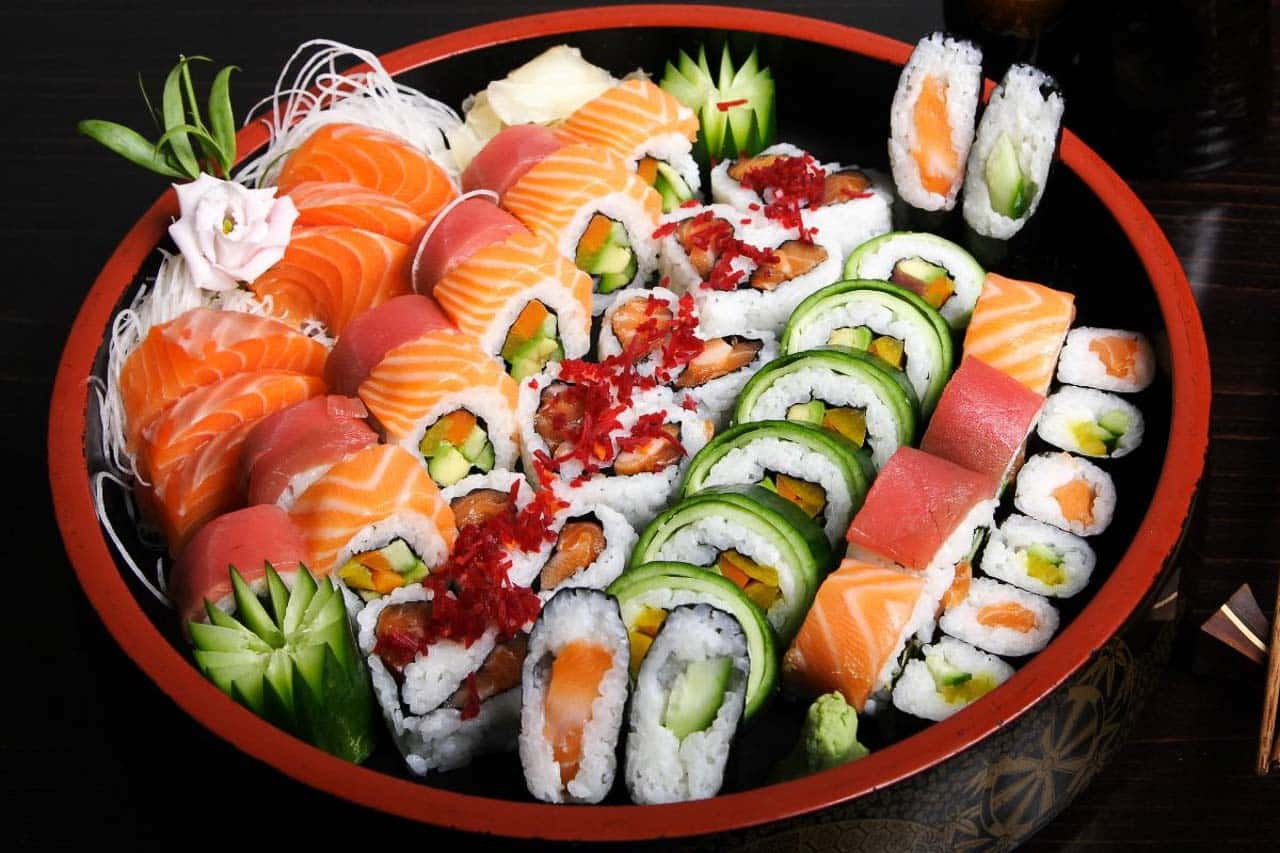
Many people think sushi is raw fish, but raw fish is correctly referred to as sashimi.
I wrote a Dummies guide to Japanese food, and the first question we addressed was “what is sushi”, since it is so often misunderstood, especially with the American public.
According to Dictionary.com, the word “sushi” did not appear within the Japanese lexicon until 1895–1900, and literally means “it is sour”, or “sour tasting.” This is because sushi rice is flavored with vinegar. It is also sweetened with sugar and contains salt; to many palates, the sweet/sour tastes are fairly balanced, with the salty component being subtle in the background.
Sushi is vinegared rice, often in “finger-shaped” portions, that provide a base for various delectable bites, including raw fish and occasionally other ingredients such as cooked shrimp, eel, or rolled omelet. This style of sushi is known as nigirizushi. Many additional, diverse types of sushi also exist.
Nigirizushi
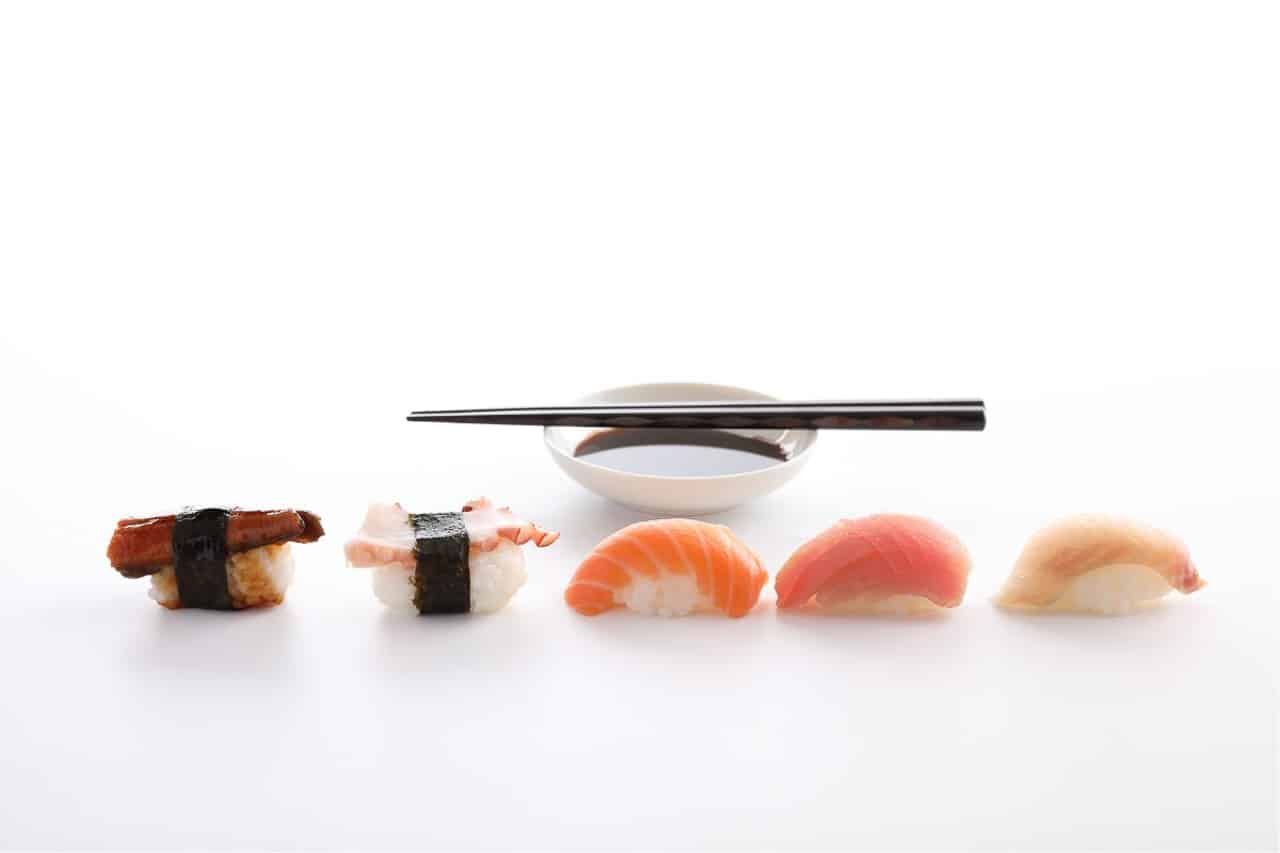
As mentioned above, this is vinegared rice fingers topped with raw fish or alternatives like cooked shrimp or sweet omelet.
Makizushi
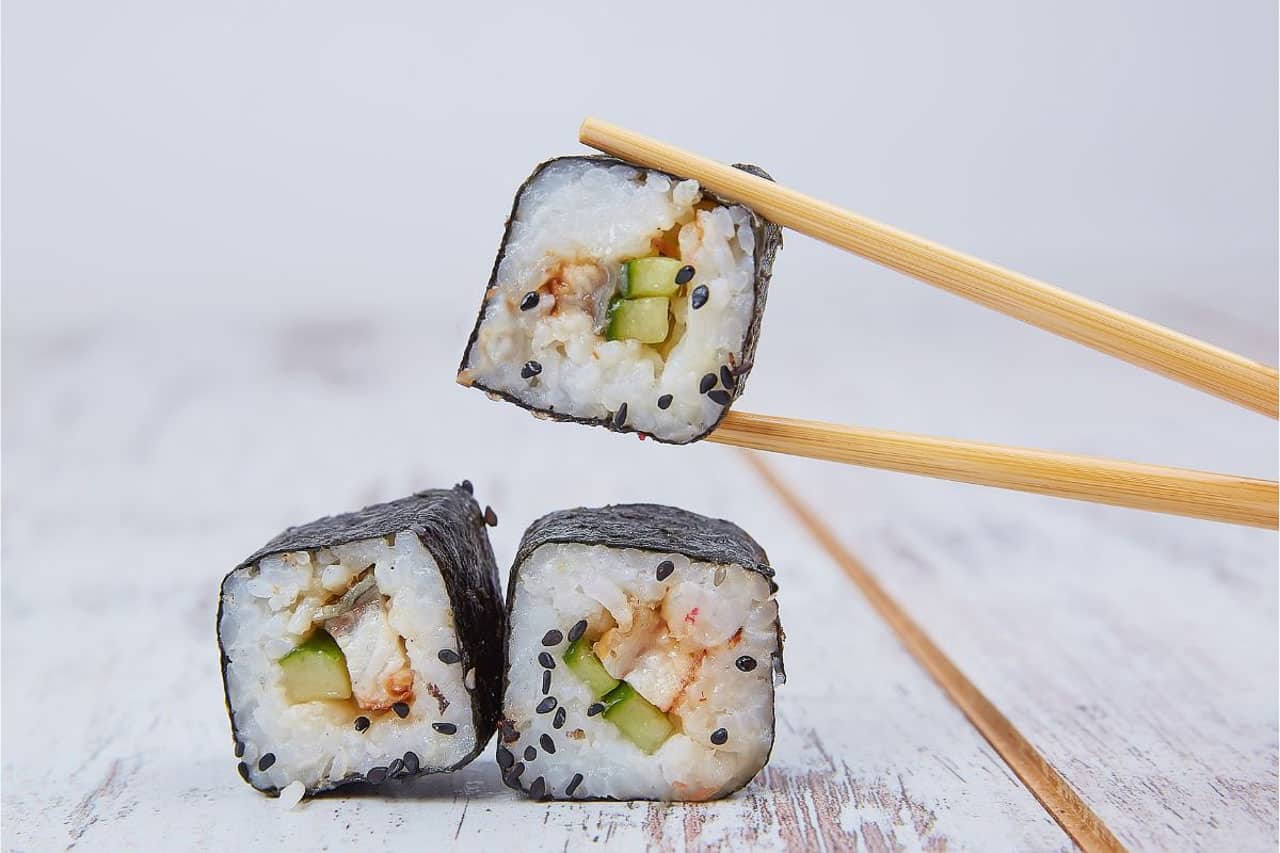
These are sushi rolls fashioned using a makisu, a bamboo mat that aids in rolling – and often referred to as “maki rolls”. Typically, they involve a sheet of nori seaweed filled with sushi rice and a central filling. Some variations feature inside-out rolls, where rice envelops the exterior and nori and fillings are enclosed within.
Temaki
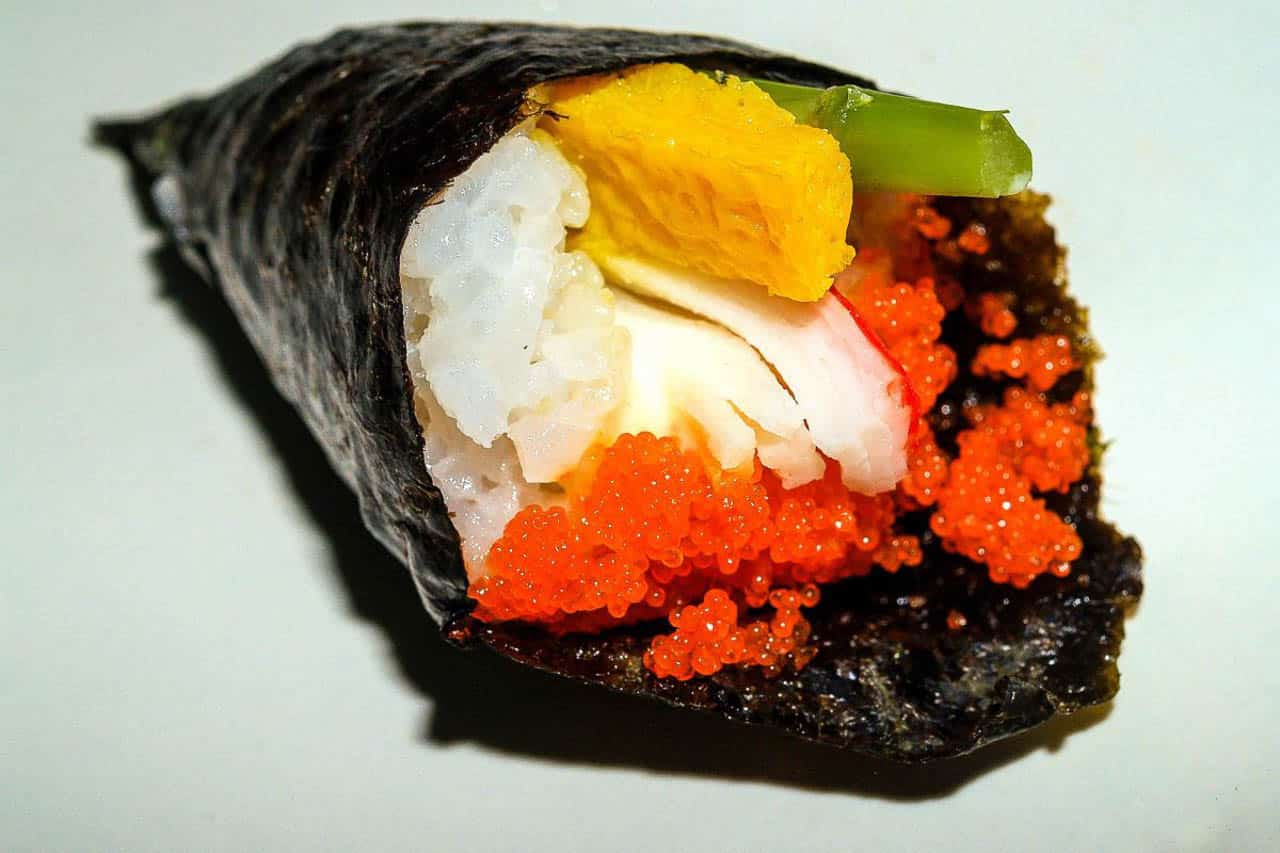
Also termed “hand rolls,” temaki involves manually stuffing nori sheets with rice and fillings, creating a conical shape meant to be handheld and eaten without chopsticks.
Oshizushi
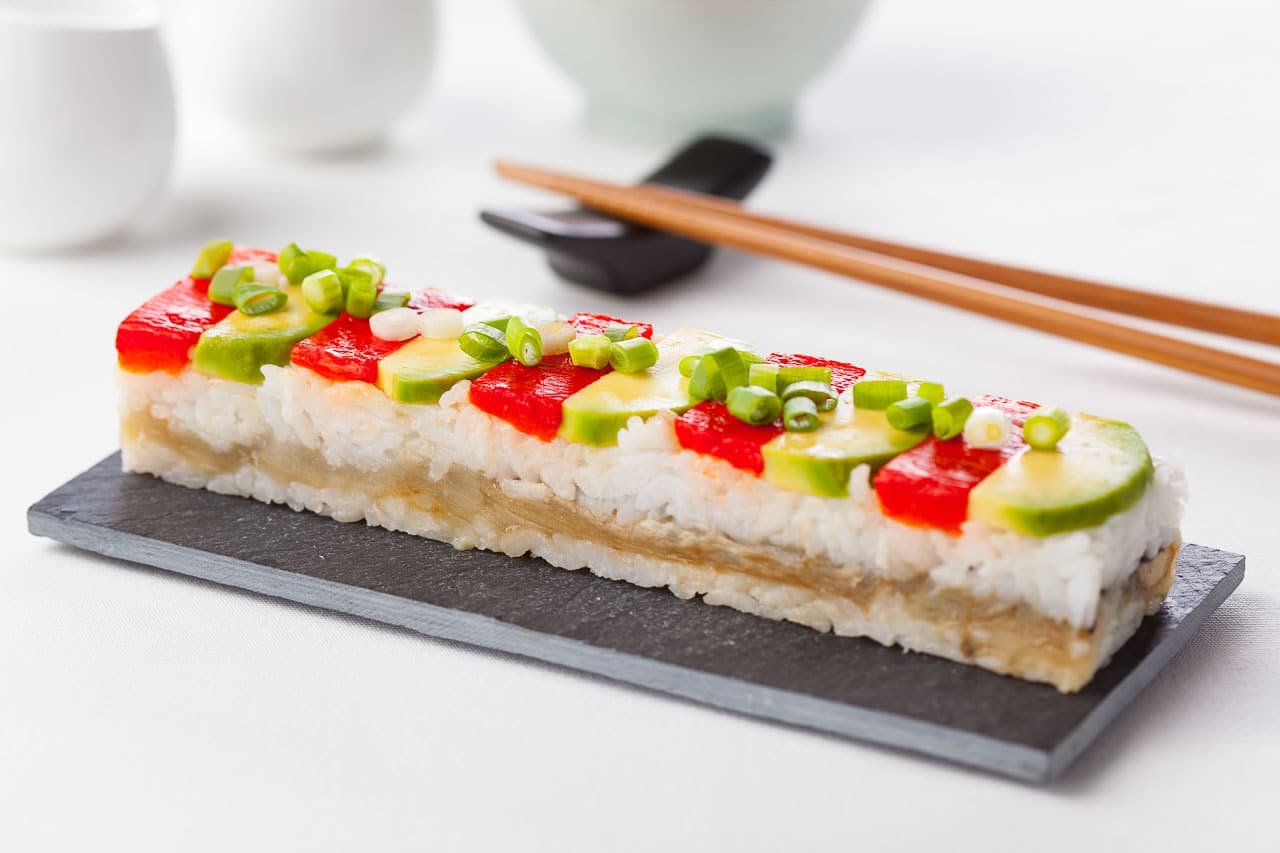
This specialty hailing from Osaka necessitates a unique mold for preparation. Sushi rice is compressed within a wooden or occasionally metal mold, then garnished with fish or toppings. The mold’s upper part is affixed, exerting pressure. Once removed, the result is a substantial sushi “cake,” subsequently sliced into bite-sized pieces. Notably, if you own one of these molds, this method offers an efficient way to craft numerous sushi pieces, making it ideal for gatherings. These molds are often available at select Asian grocery stores.
Inarizushi
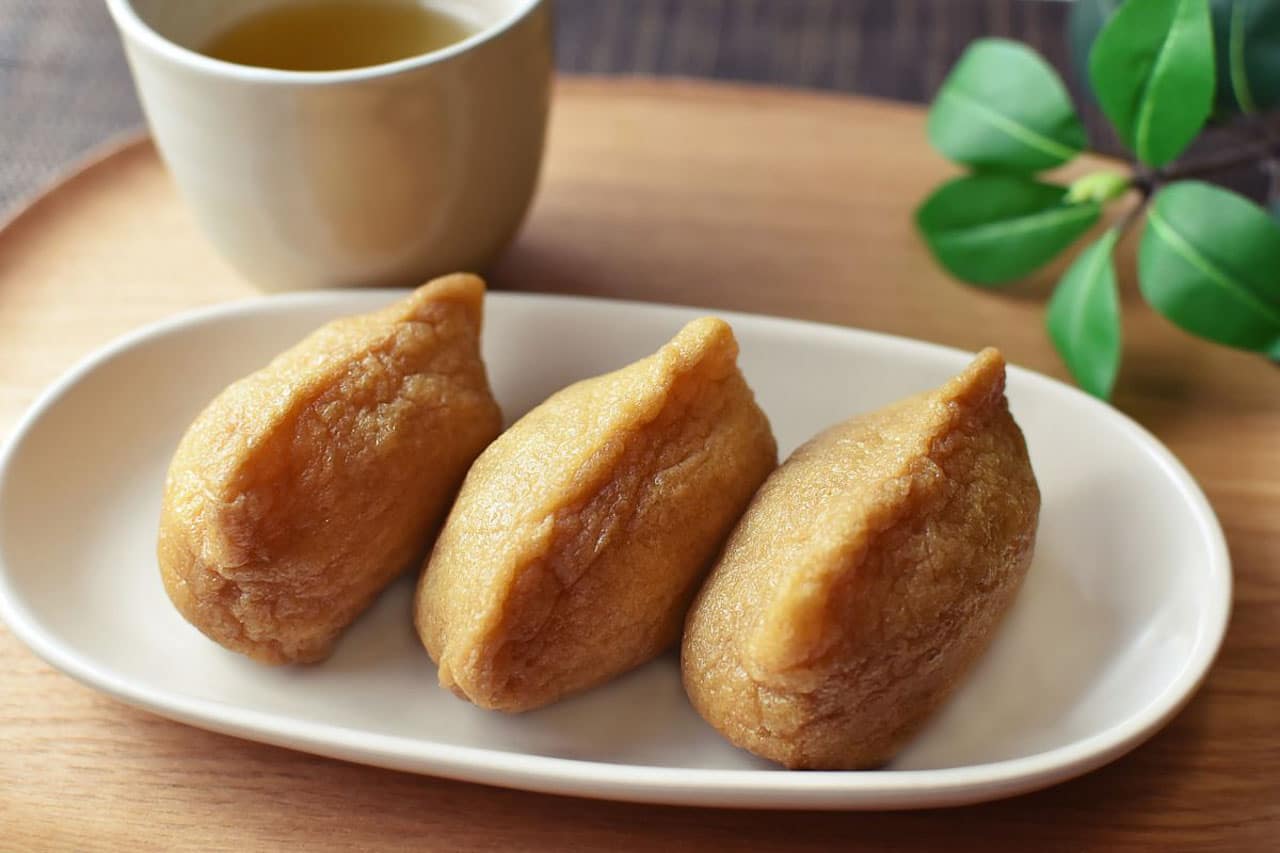
Offering a vegetarian sushi alternative, inarizushi is straightforward to assemble. You can purchase prepared “aburage”, which are fried tofu pouches, and this streamlines much of the preparation. The process involves stuffing the pouches with sushi rice and seasoning (such as a bit of wasabi). These make for excellent additions to picnics and lunch boxes.
Chirashizushi
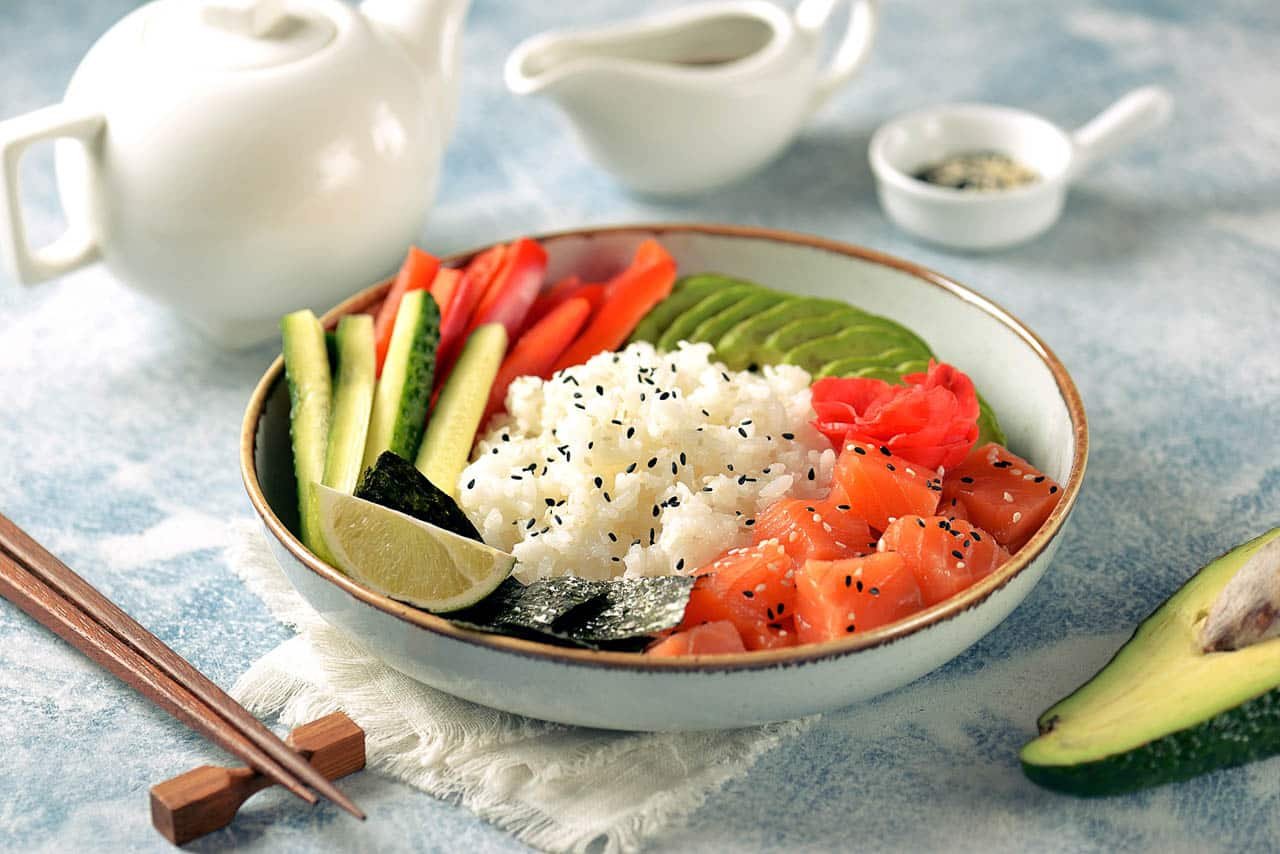
The term translates to “scattered” sushi, accurately reflecting its nature. This sushi variation is remarkably simple: a bowl of sushi rice serves as the foundation, artfully arranged with an assortment of fish and vegetables. Much like oshizushi, chirashizushi is a superb choice for gatherings. It’s possible to prepare a large communal bowl for self-service or create individual portions for more intimate dinner parties.
The Most Common Supermarket Sushi
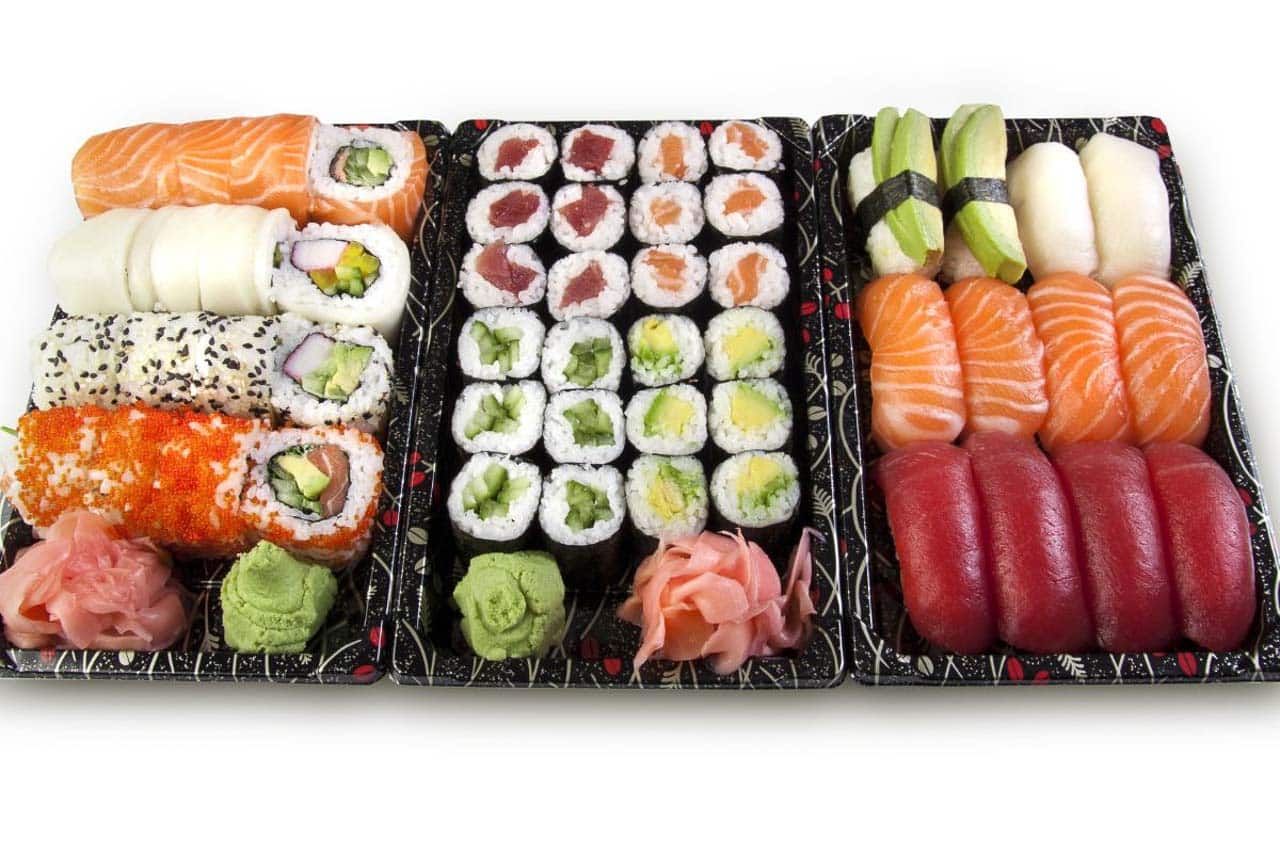
The most common types of sushi found in supermarkets are nigirizushi, and makizushi. Some markets also offer “bowls”, or chirashizushi, along with inarizushi, and sashimi.
There are regional trends. According to the Wall Street Journal article, Kroger’s California stores sell more sushi featuring fresh sashimi, while Ohio locations sell more rolls with imitation crab.
Why Do Supermarkets Offer Sushi?
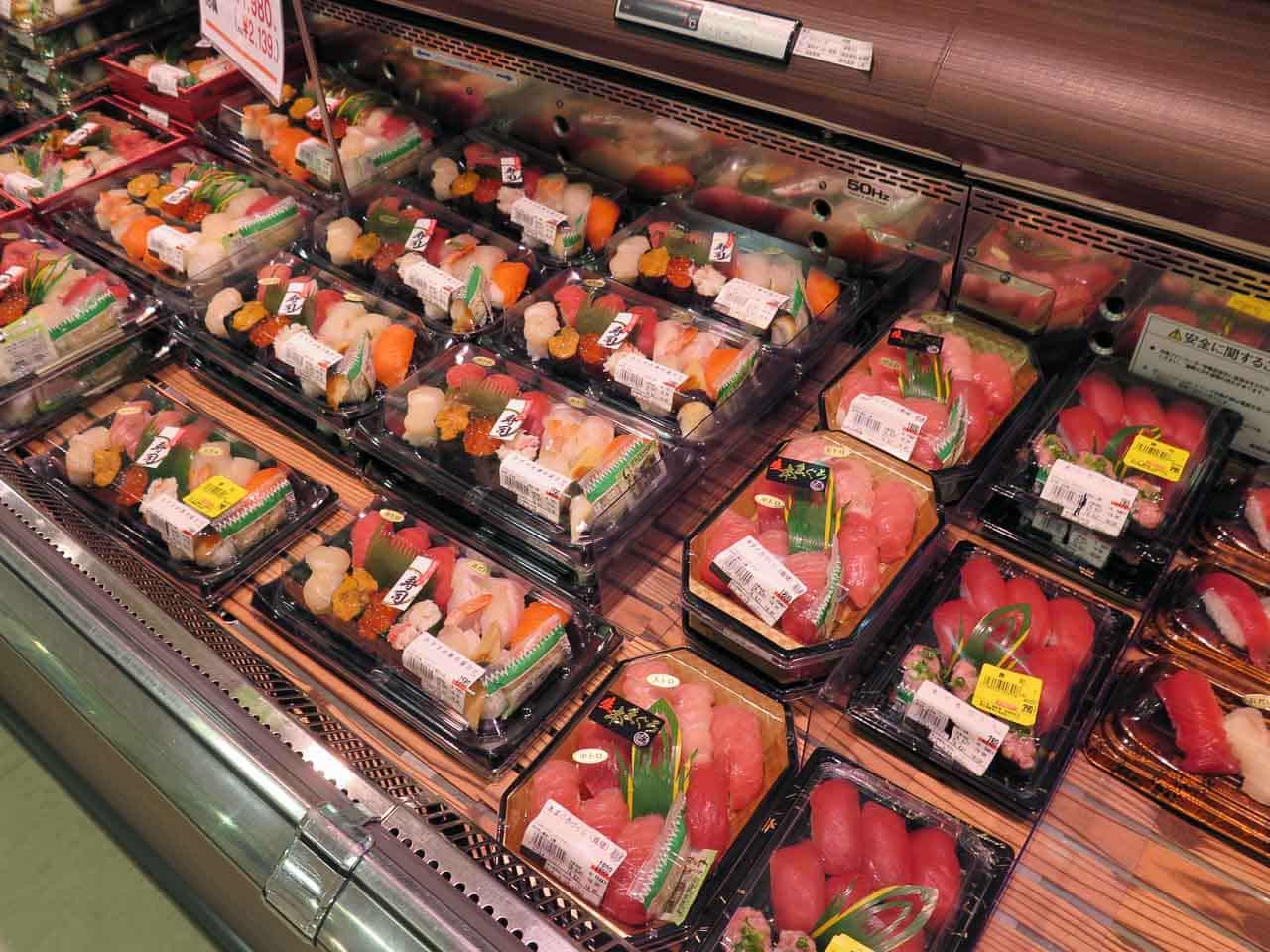
Strategists at Kroger’s have seen that offering sushi has increased sales of other ready-to-eat meals and has even encroached upon overall restaurant sales of sushi.
By offering sushi, supermarkets are training the consumer to think of them for quality and interesting take-out/prepared food, and to spend their money there, instead of at restaurants.
Most of us are quite familiar with supermarket delis and bakeries, salad bars and buffets, but the most popular items in US supermarkets, that drive the dollars, are some sort of cooked chicken (those rotisserie chickens) and sushi.
Why Is Sushi Popular?

The surge in sushi’s popularity can be attributed to the younger generation of Americans, many of whom were exposed to a wide array of cuisines while growing up. This demographic is driving the increased demand for sushi. A growing number of customers are embracing sushi rolls as a go-to option for swift and convenient meals.
Additionally, the trend of purchasing sushi on a whim after witnessing skilled chefs craft it in-store is gaining traction. For some individuals, sushi presents itself as a health-conscious substitute for other pre-made meal choices.
Who Makes Supermarket Sushi?
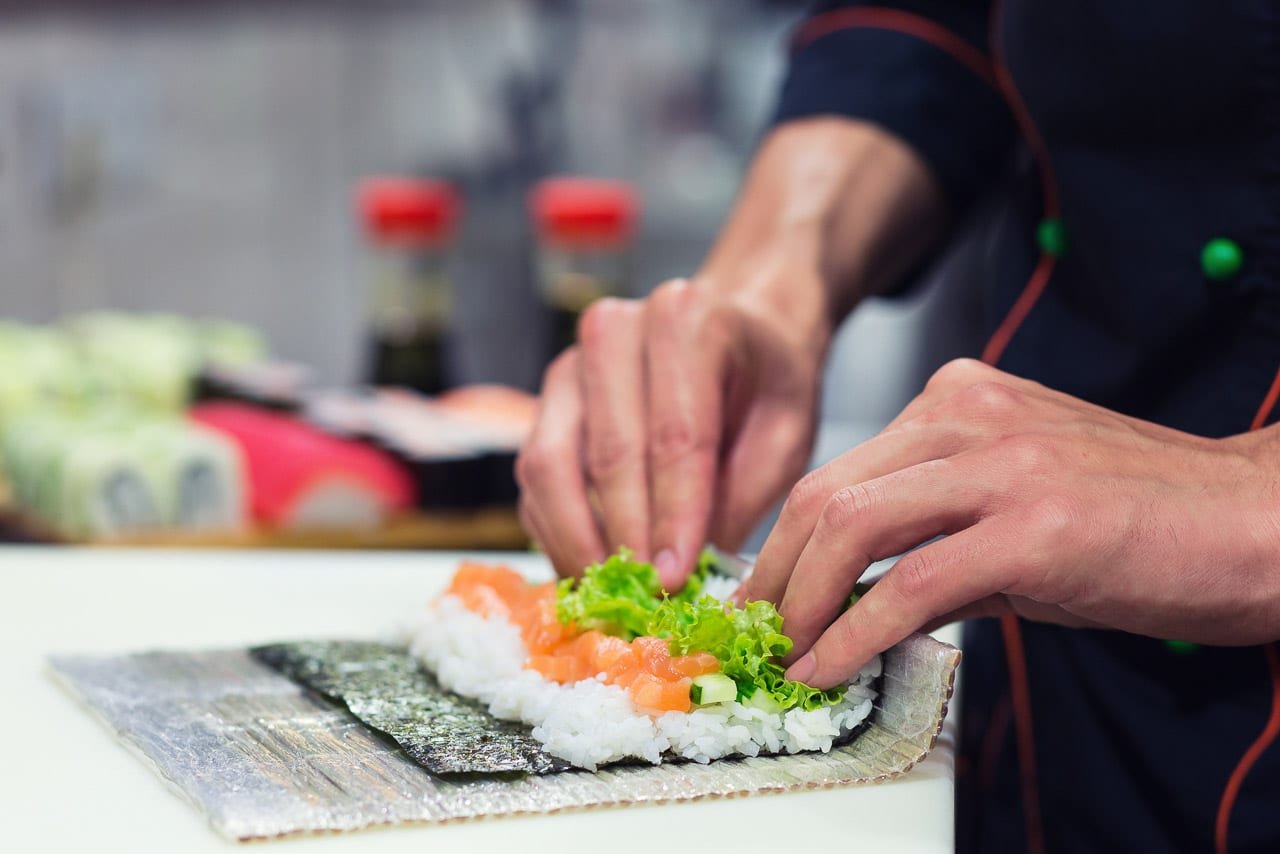
Kroger works with Snowfox and Yummi Sushi, two franchisers that ensure sourcing of high-grade fresh fish and run the sushi departments. The article states that Snowfox has 1300 chefs working across the nation for Kroger specifically.
In the northeast, we see Genji Sushi operating in many grocery stores. Some others across the nation are Hissho Sushi, Bento Sushi, and Sushi Avenue, to name just a few. Some supermarkets will make it clear with signage where the sushi is coming from, while others do not.
According to TopFranchise.com, Advanced Fresh Concepts Corp. (AFC) is the largest sushi bar franchisor in US supermarkets. They have over 4,000 stores and their sushi is made fresh in-store daily throughout its franchise locations at grocery stores across the United States, Canada, and Australia.
Even when a supermarket might have their own chefs and make sushi in-house, they might be partnering with a company such as AFC to provide the ingredients.
Is Supermarket Sushi Economical?
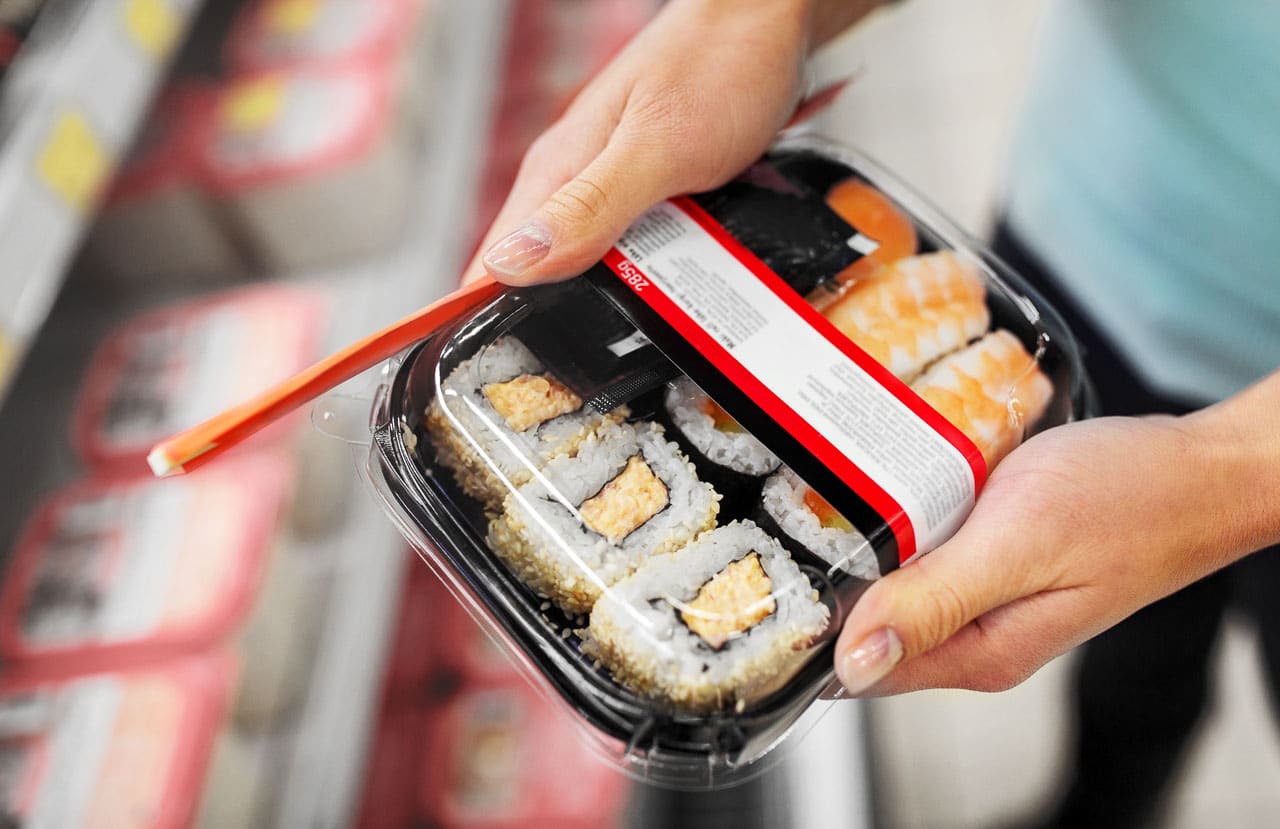
On average, restaurant sushi is about 50 cents more per roll, than supermarket sushi. This was when studies looked at tuna avocado rolls.
What About Supermarket Sushi Quality?
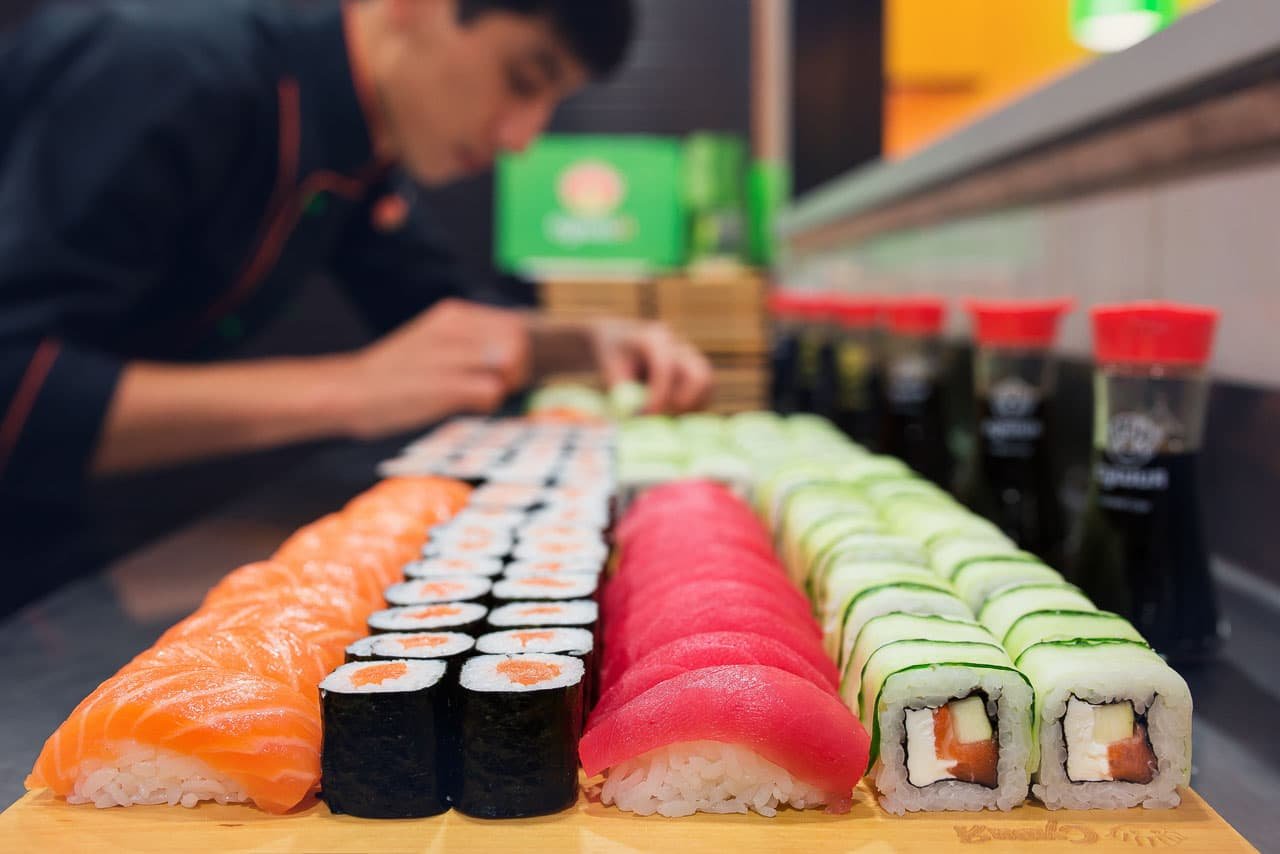
Everyone wants to know about the quality of supermarket sushi. There is no black and white answer.
At supermarkets where they are buying and selling pre-made containers of sushi, that was made off-site, there is a distinct degradation of sensory experience (taste and texture), even if the sushi started with quality ingredients. Any sushi that has been sitting around will not be great.
If You Can, Have Them Make It For You On Request
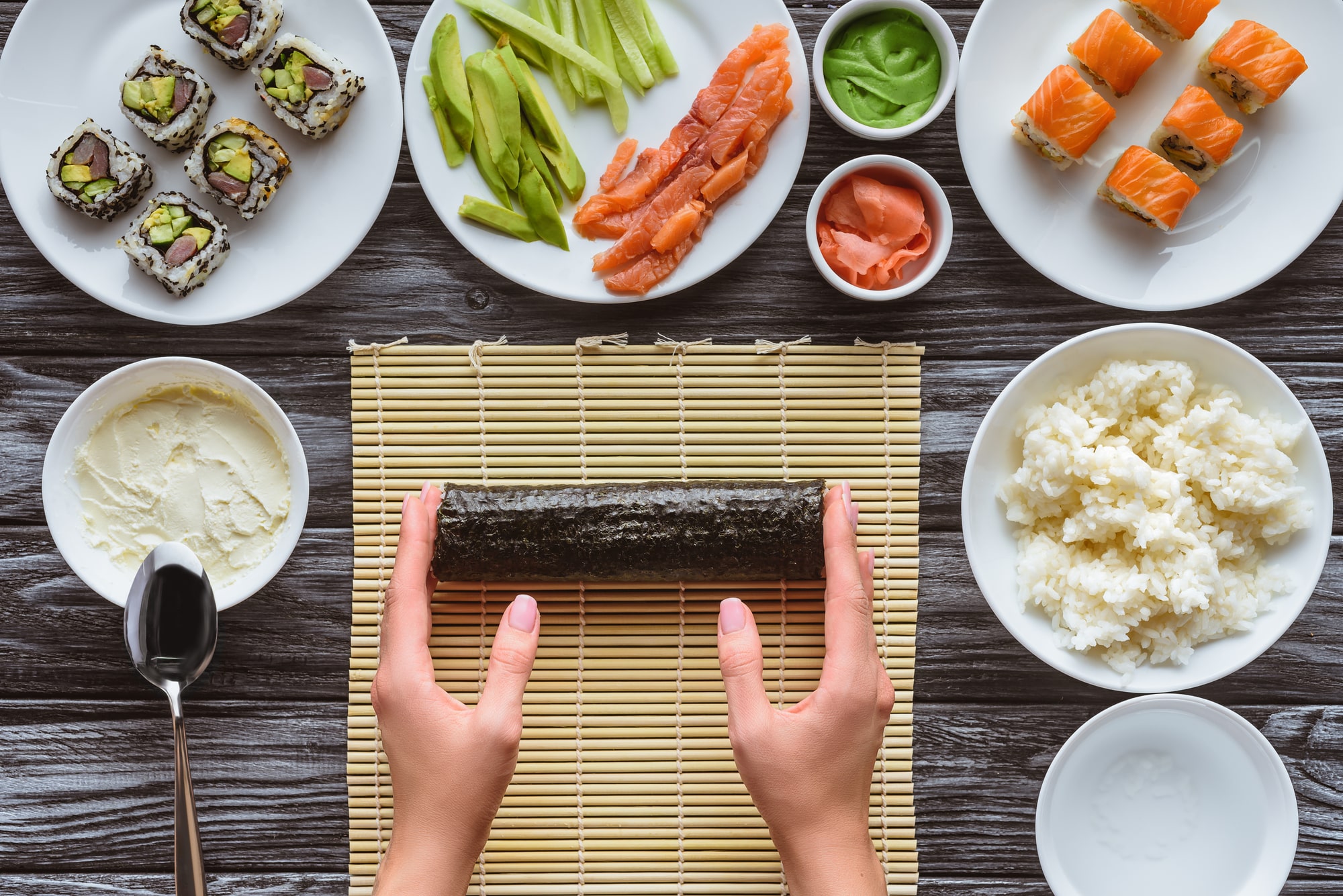
Which brings us to the nuance of the situations where you have sushi being made in-house. If you can make a request, and it is made for you right then and there, and you eat it soon after, the quality can be quite good – and even as good as some restaurants.
If the sushi was made in house, but then has sat in the grab-and-go refrigerator case for a while, it will not be as good, but still better than the first instance, where it was made off-site.
The raw fish, if used, is still safe to eat, even with those that have sat around a bit, assuming the fish was appropriate for raw consumption in the first place.
And What About The Rice?
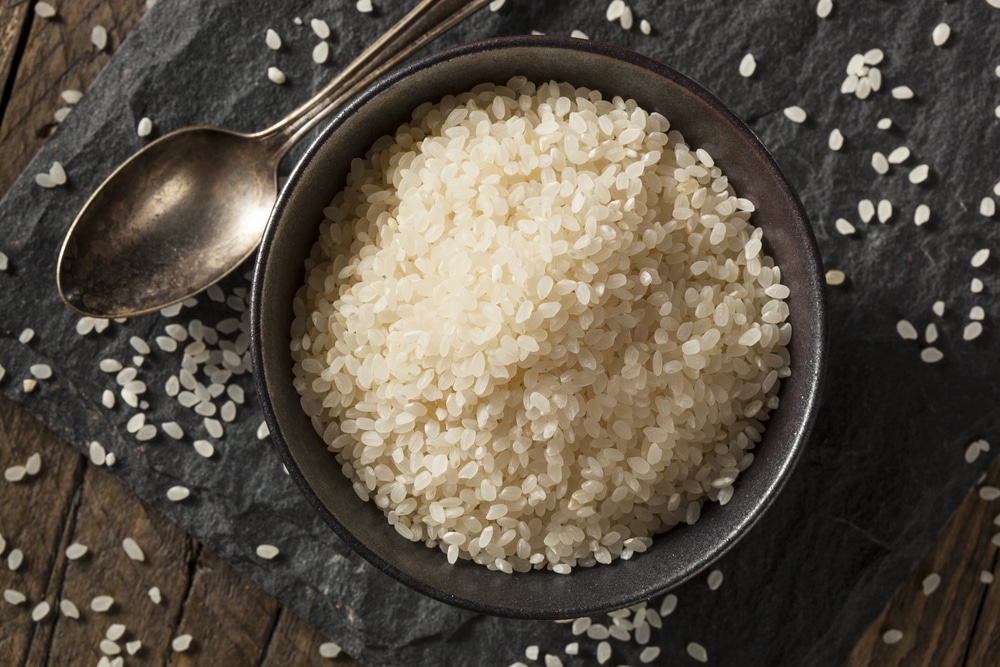
We find the biggest challenge is with the rice. Sushi rice (any cooked rice, really) that has been refrigerated will not be an optimal experience. The longer it is chilled, the firmer it gets, and the texture really suffers. Freshly made and eaten sushi rice has a delectable quality. Refrigerated rice does not. So, it might come down to how picky you are about that.
Then of course, how well was the sushi made in general. Was a high quality wasabi and pickled ginger offered? These can vary hugely. And how was the quality of the proteins, especially the raw fish. Which leads us to the next topic, is raw fish safe to eat?
Is Raw Fish Safe To Eat?
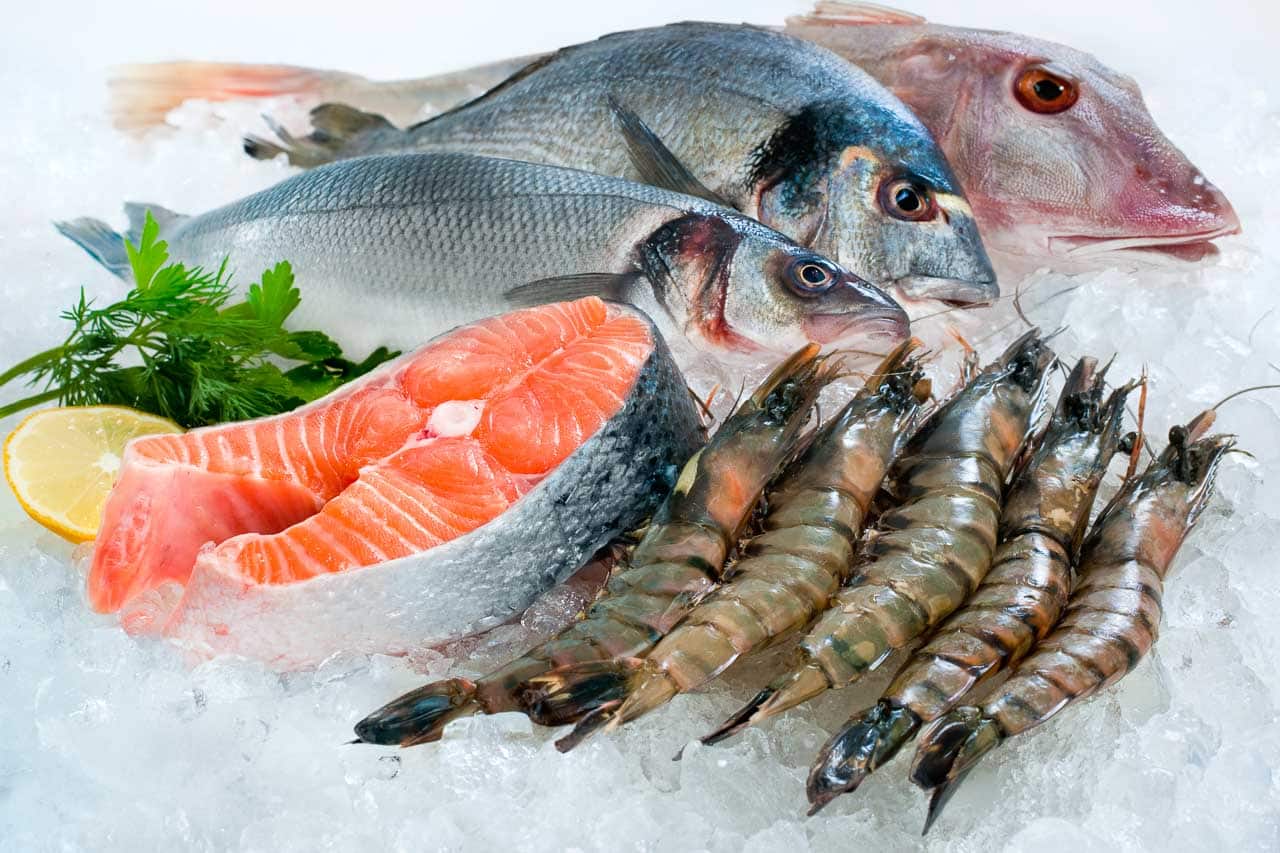
Consuming raw fish can be a safe choice for the majority of healthy individuals, provided proper safety precautions are observed. Diverse culinary traditions worldwide incorporate raw fish into their dishes, ranging from sushi to ceviche to crudo, showcasing both their aesthetic appeal and delightful flavors.
While the associated health risks are typically low for healthy individuals, they can escalate for specific populations. Common symptoms of foodborne illnesses among healthy individuals include nausea, diarrhea, fever, and abdominal discomfort. Yet, for vulnerable groups such as those aged over 65, under 5, expectant mothers, and individuals with compromised immune systems, the risks can manifest as severe and potentially life-threatening ailments.
Contrary to Popular Belief, Frozen Fish is a Good Thing
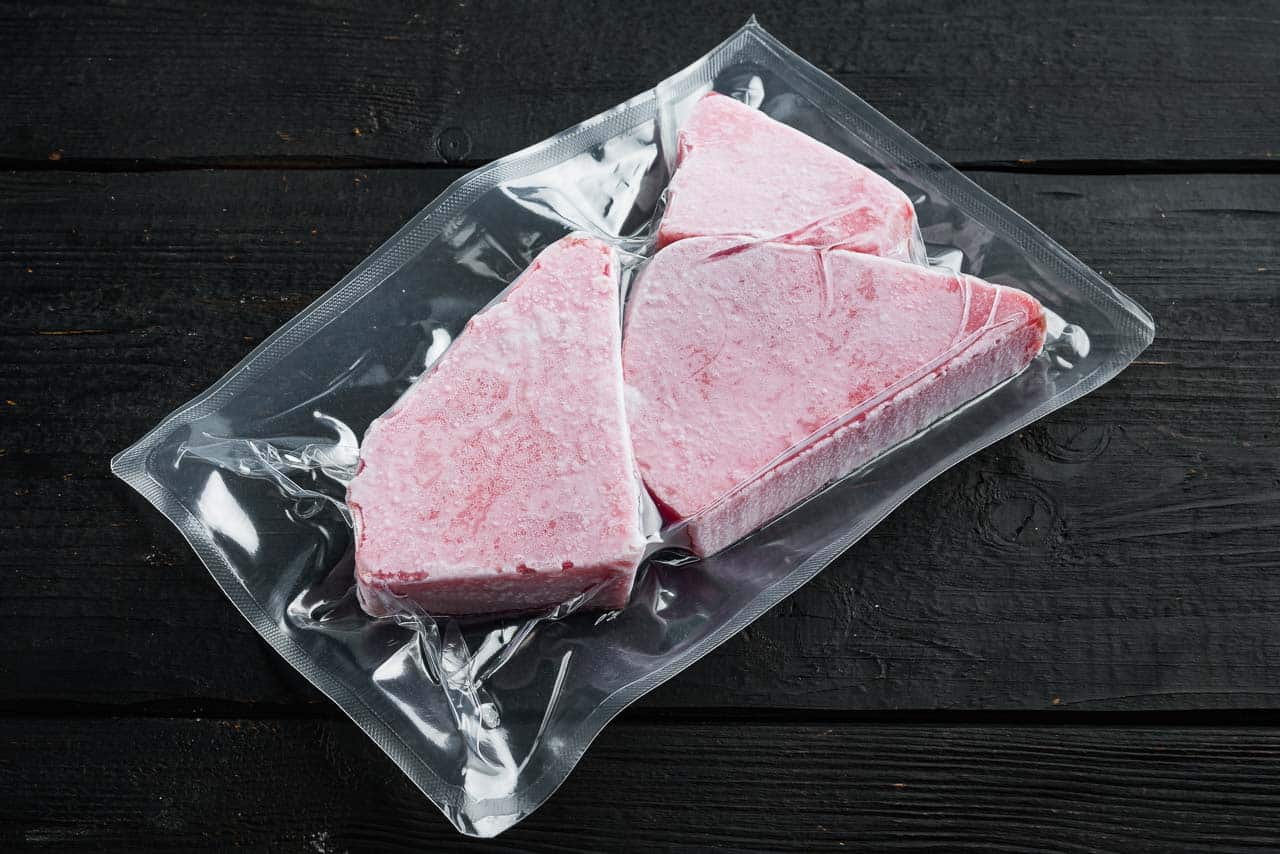
Freezing effectively eradicates parasites that pose health risks. The U.S. Food and Drug Administration (FDA) advises freezing fish at temperatures of -4°F for seven days (or -31°F for 15 hours for accelerated freezing). However, not all types of fish necessitate freezing. According to the FDA, freezing is generally unnecessary for certain tuna varieties and farmed fish raised in open water enclosures, ponds, or tanks.
Those that make sushi and sashimi are well aware of these guidelines, and we hope that they are implemented. You can certainly ask at the counter.
Don’t Do This At Home
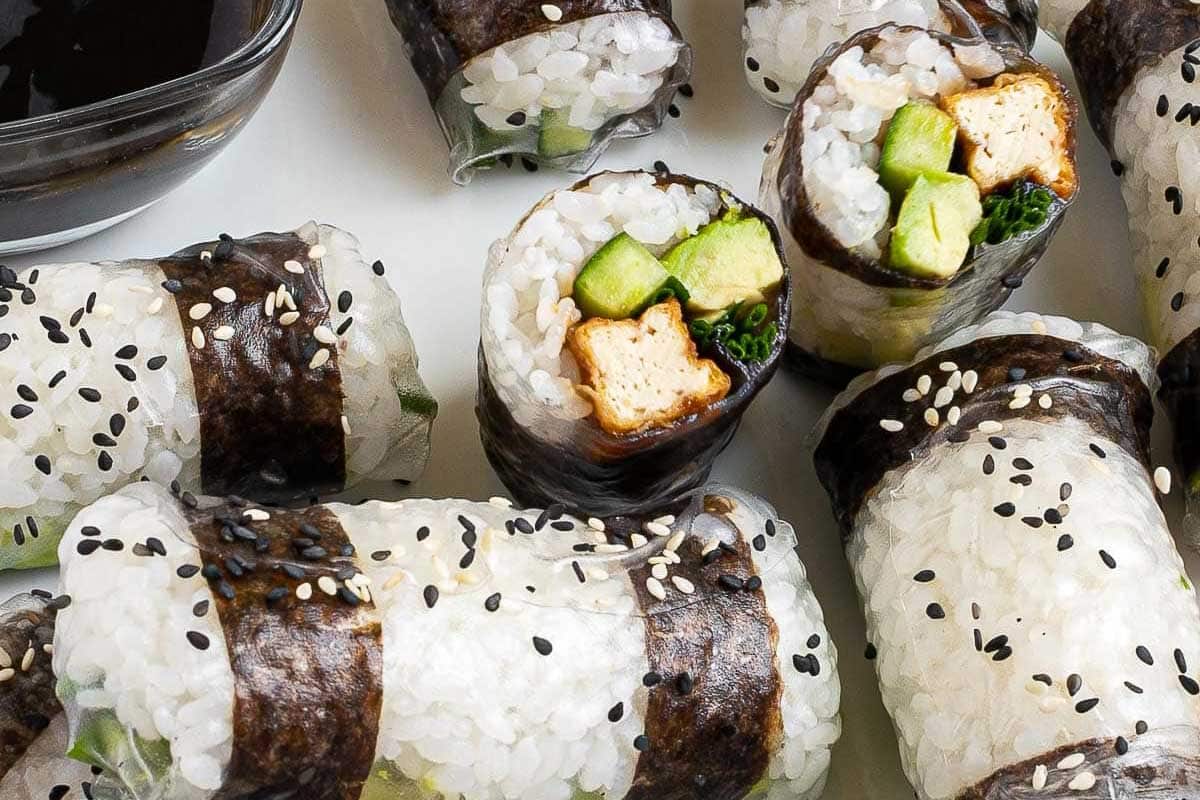
It is never suggested that you go to a fish counter and buy raw fish to make sushi or sashimi at home, unless the fish has specifically been labeled as sushi-grade. You can find such fish in many upscale supermarkets or specialty markets, such as Whole Foods and H-Mart.
All About Sushi & The Low FODMAP Diet
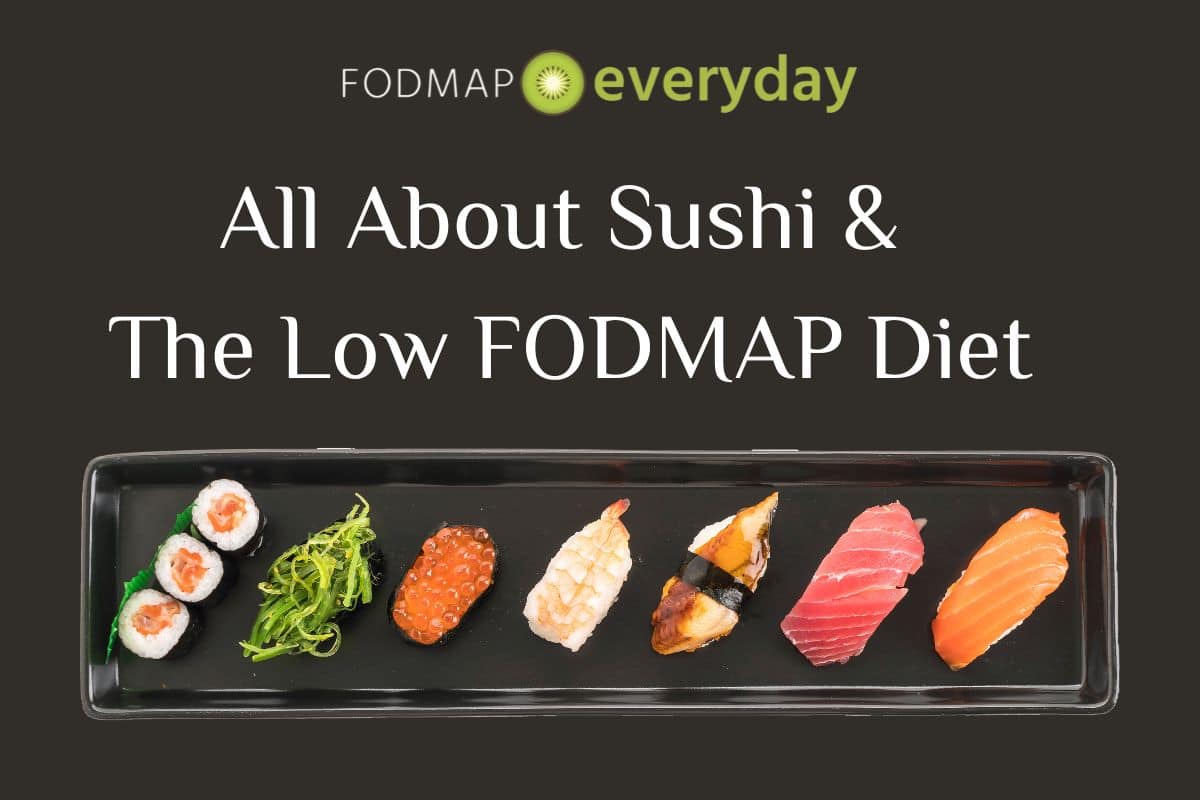
This article is All About Sushi & The Low FODMAP Diet. If you are a sushi lover and are following the low FODMAP diet, you are probably wondering what you can eat at your favorite Japanese restaurant, and wherever you find prepared takeout sushi. We have all the information you need! We cover sushi, sashimi, wasabi, pickled ginger, soy sauce, seaweed salad, inarizushi and all your favorites, as well as answer questions about raw fish safety – and whether buying sushi in supermarkets is a good idea. Read: All About Sushi & The Low FODMAP Diet
Sesame Crusted Ahi Tuna with Pickled Cucumbers
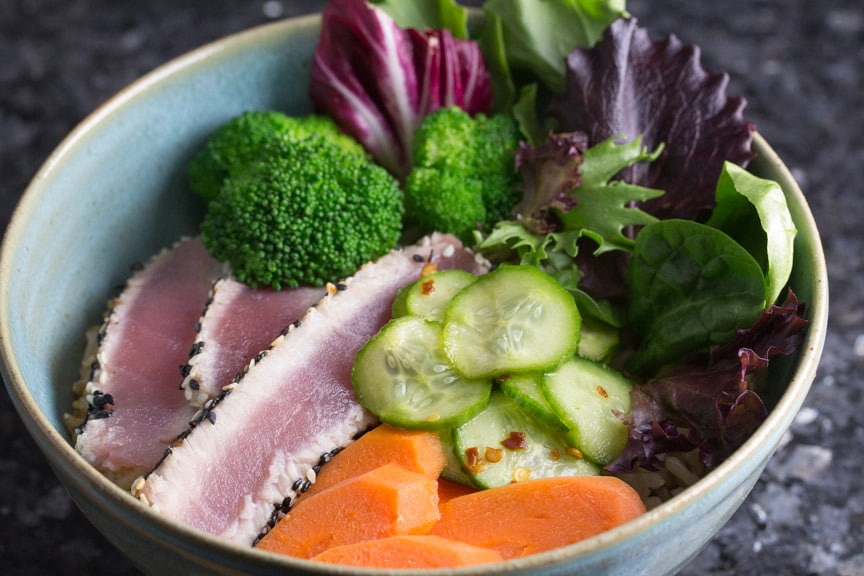
Seared tuna steaks are very easy to make at home as long as you can find very fresh fish. Shop in a dedicated fish store if possible or buy from a supermarket where you can chat with the counter person. Signs might say “sushi grade”; “ahi” and often bluefin, yellowfin and big eye tuna are prime candidates for serving fairly raw with just a sear on the outside. Get the recipe: Sesame Crusted Ahi Tuna with Pickled Cucumbers







